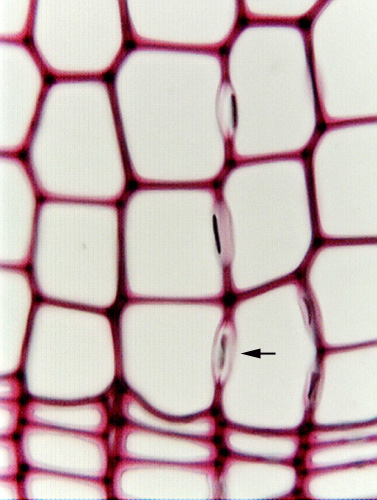 Fig.
15.2-9. Transverse section of white pine
wood (Pinus strobus).
Fig.
15.2-9. Transverse section of white pine
wood (Pinus strobus).
Most features of conifer tracheids have been illustrated in Chapter 7 Xylem, so only those characters that are of special interest to the organization of conifer wood will be illustrated here. Conifer tracheids have large circular bordered pits, and they occur almost exclusively on the radial walls of the tracheids, not on the tangential walls. In this location, they interconnect cells that have been produced by two neighboring cells of the vascular cambium. If they occurred on the tangential walls, then they would interconnect two sister cells produced by the same cambium cell.
The dark black line in each pit here is the torus of the pit membrane, and pits have been aspirated: one tracheid cavitated and as the water rushed out of the cell, it pushed the torus over toward the pit border. The pit marked by the arrow was not aspirated, so its torus has remained centered between the two borders.